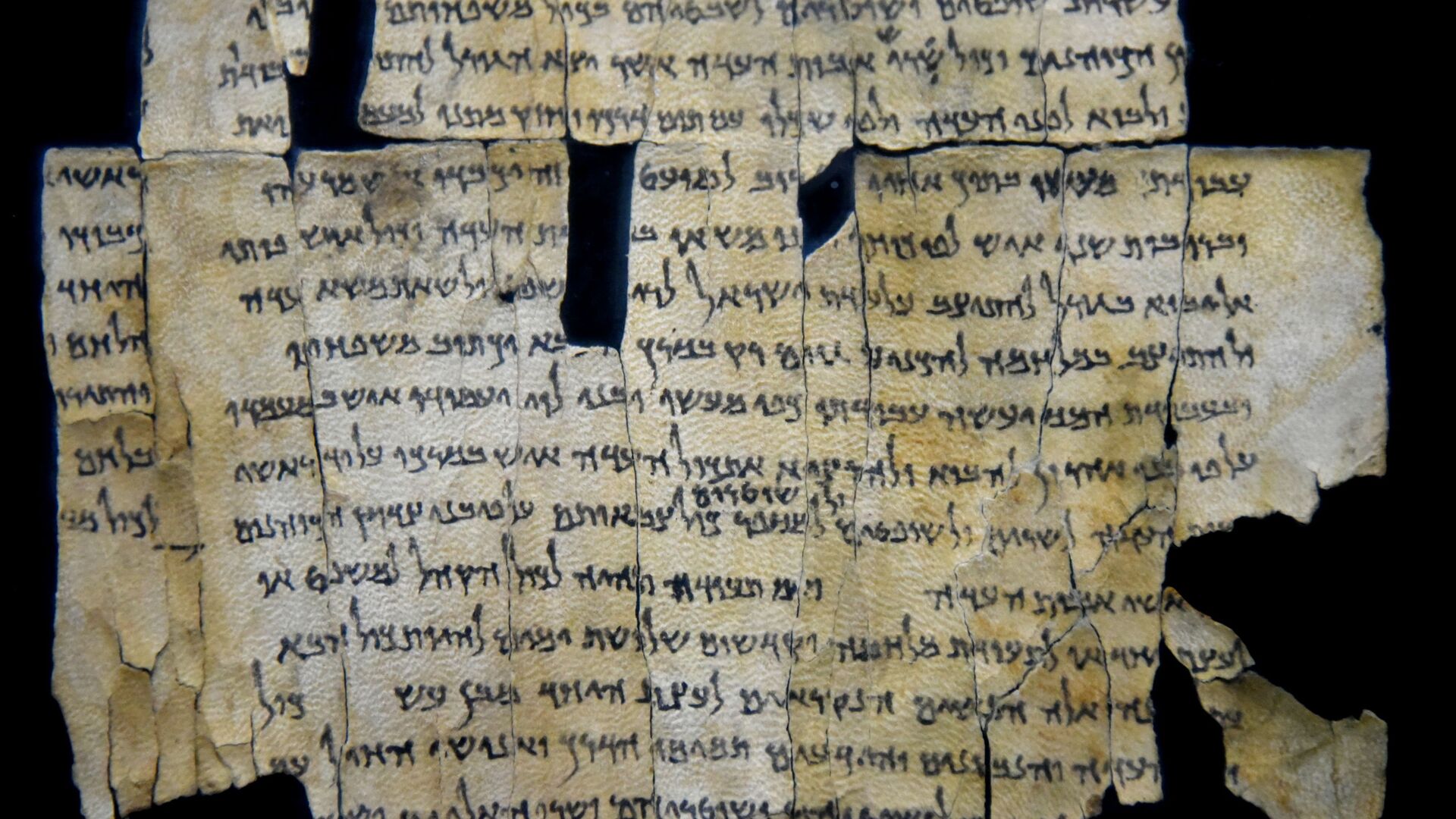https://sputnikglobe.com/20210830/ancient-ceremony-may-unravel-mysteries-of-dead-sea-scrolls-archaeological-site-study-claims-1083752456.html
Ancient Ceremony May Unravel Mysteries of Dead Sea Scrolls Archaeological Site, Study Claims
Ancient Ceremony May Unravel Mysteries of Dead Sea Scrolls Archaeological Site, Study Claims
Sputnik International
Since the discovery of the Dead Sea Scrolls, one of the most important archaeological findings in modern times, Qumran, has been continuously examined by... 30.08.2021, Sputnik International
2021-08-30T15:05+0000
2021-08-30T15:05+0000
2022-12-08T16:26+0000
science & tech
society
newsfeed
dead sea scrolls
archaeology
west bank
https://cdn1.img.sputnikglobe.com/img/107674/77/1076747726_0:161:3069:1887_1920x0_80_0_0_702c6f1413803a25c7f1708909271483.jpg
An ancient ceremony described in the Cairo Genizah, a collection of Jewish historical manuscripts discovered in the 19th century in the Egyptian capital, may hold the key to understanding the mysteries of the archaeological site of Qumran, claims Dr Daniel Vainstub of Ben-Gurion University and the Israel Museum.Was Qumran a fortress, a villa, or a commercial centre? Who lived in it, why are there thousands of pottery vessels in the area, which was reportedly inhabited by no more than 20-30 people? Why haven't archaeologists found any evidence of private dwellings at Qumran? These are some of the questions scientists still can’t answer.Dr Vainstub claims to have solved some of these mysteries. He points to a document in the Cairo Genizah called the Damascus Document, which describes an ancient ceremony.According to Vainstub, the gathering took place at what is now the archaeological site.The scientist’s hypothesis offers an explanation for several mysteries, such as the absence of private dwellings amidst numerous public buildings. Vainstub claims that the small group that inhabited Qumran prepared the site each year for a grandiose event attended by thousands of people. The pilgrims who arrived for the ceremony slept outside or in tents. The researcher suggests that Qumran was even built for the purpose of yearly religious gatherings, which was likely attended by members of the Jewish Essenes sect.
west bank
Sputnik International
feedback@sputniknews.com
+74956456601
MIA „Rosiya Segodnya“
2021
News
en_EN
Sputnik International
feedback@sputniknews.com
+74956456601
MIA „Rosiya Segodnya“
Sputnik International
feedback@sputniknews.com
+74956456601
MIA „Rosiya Segodnya“
science & tech, society, newsfeed, dead sea scrolls, archaeology, west bank
science & tech, society, newsfeed, dead sea scrolls, archaeology, west bank
Ancient Ceremony May Unravel Mysteries of Dead Sea Scrolls Archaeological Site, Study Claims
15:05 GMT 30.08.2021 (Updated: 16:26 GMT 08.12.2022) Since the discovery of the Dead Sea Scrolls, one of the most important archaeological findings in modern times, Qumran, has been continuously examined by researchers, who have struggled to solve the puzzles surrounding the area.
An ancient ceremony described in the Cairo Genizah, a collection of Jewish historical manuscripts discovered in the 19th century in the Egyptian capital, may hold the key to understanding the mysteries of the
archaeological site of Qumran, claims Dr Daniel Vainstub of Ben-Gurion University and the Israel Museum.
Was Qumran a fortress, a villa, or a commercial centre? Who lived in it, why are there thousands of pottery vessels in the area, which was reportedly inhabited by no more than 20-30 people? Why haven't archaeologists found any evidence of private dwellings at Qumran? These are some of the questions scientists still can’t answer.
Dr Vainstub claims to have solved some of these mysteries. He points to a document in the Cairo Genizah called the Damascus Document, which describes an ancient ceremony.
"And all [the inhabitants] of the camps shall assemble in the third month and curse anyone who deviates either to the right [or to the left from the] Torah", the researcher wrote in his study.
According to Vainstub, the gathering took place at what is now the archaeological site.
"The site of Qumran, with its facilities, caves and surfaces, accords with the evidence for the annual gathering that emerges from the scrolls. No other known site is suitable for such a purpose", said Dr Daniel Vainstub.
The scientist’s hypothesis offers an explanation for several mysteries, such as the absence of private dwellings amidst numerous public buildings. Vainstub claims that the small group that inhabited Qumran prepared the site each year for a grandiose event attended by thousands of people. The pilgrims who arrived for the ceremony slept outside or in tents. The researcher suggests that Qumran was even built for the purpose of yearly religious gatherings, which was likely attended by members of the Jewish Essenes sect.



